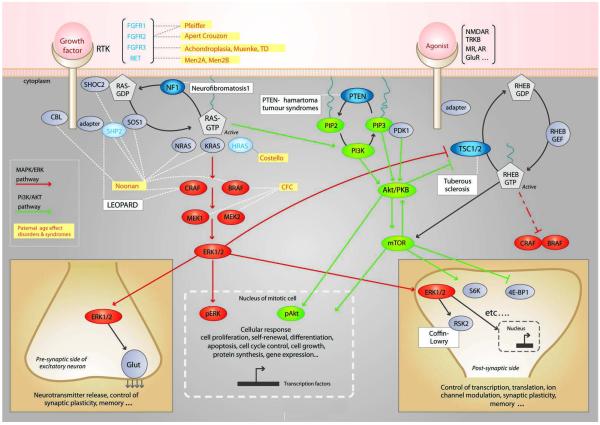Figure 1.
Simplified overview of the receptor tyrosine kinase (RTK)-RAS and RAS-related RHEB signaling pathways. See (5) and 34 for more details on pathways. Germline disorders associated with mutations in specific genes along this pathway are indicated in boxes. The gene products that belong to the paternal age-effect class (as defined in text) are in blue and yellow boxes indicate related disorders. RASopathies include Noonan, Costello, LEOPARD and cardio-facio-cutaneous (CFC) syndromes and are caused by mutations in the RAS/MAPK/ERK pathway. Other proteins in the pathway and associated germline disorders for which evidence of direct involvement in the process of selfish spermatogonial selection/paternal age-effect is still lacking are indicated in black. Known tumor-suppressor genes in cancer are indicated by blue circles. The RAS pathway is involved in many cellular process and some of the consequences of pathway activation of are illustrated in the case of transduction occurring in a mitotically active cell (bottom, middle) or during neurotransmission and/or synaptic plasticity (bottom, left and right). Translocation of phosphorylated forms of ERK (pERK) or AKT (pAKT) into the nucleus of a mitotic cell triggers many different cellular responses such as cell growth, proliferation, differentiation, motility and apoptosis. Within excitatory neurons, a few examples of cellular responses triggered by the RAS orRHEB pathways are illustrated and involve molecules such as ribosomal S6 kinase (S6K and RSK2) and eukaryotic translation initiation factor 4E-binding protein 1 (4E-BP1).

